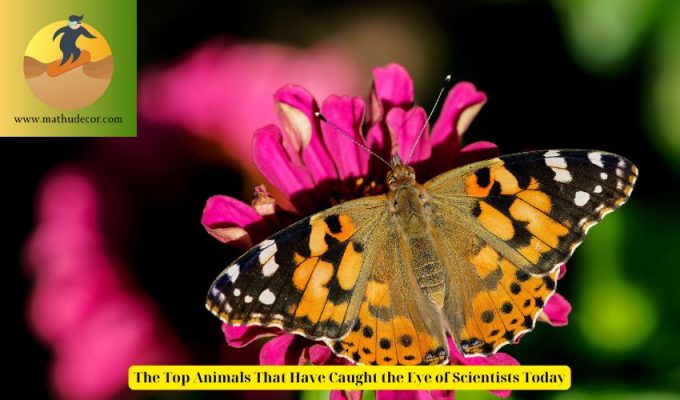
Discover the top animals that are currently captivating the interest of scientists.
The Elusive Behavior of the Snow Leopard
The snow leopard is known for its elusive behavior, making it a challenging animal to study and observe in the wild. These majestic big cats are solitary creatures, preferring to live and hunt alone in the rugged and remote mountainous regions of Central and South Asia. Their elusive nature makes it difficult for researchers to gather accurate data on their population size and behavior, adding to the mystery and allure of the snow leopard.
Adaptations for Survival
Snow leopards have evolved a number of adaptations that contribute to their elusive behavior. Their thick fur and large, furry paws help them to navigate the harsh, snowy terrain of their mountainous habitat, while their keen senses of sight and hearing allow them to detect prey from great distances. Additionally, their solitary nature and large home ranges make it challenging for researchers to track and study them in the wild.
Despite the challenges of studying snow leopards, researchers are working tirelessly to better understand these elusive creatures in order to aid in their conservation. Through the use of camera traps, satellite tracking collars, and genetic analysis, scientists are slowly unraveling the mysteries of the snow leopard’s behavior and ecology. By gaining a deeper understanding of these elusive big cats, conservation efforts can be better targeted to ensure the long-term survival of this iconic species.
The Intelligence and Social Structure of Dolphins
Dolphins are known for their high level of intelligence, which is evident in their complex social structures and communication abilities. These marine mammals have large, highly developed brains that are capable of sophisticated problem-solving and learning. Studies have shown that dolphins are able to recognize themselves in mirrors, a trait that is indicative of self-awareness and higher cognitive abilities. Their intelligence also allows them to exhibit a wide range of behaviors, including cooperation, tool use, and the ability to learn new tasks through observation and imitation.
Social Structure
Dolphins are highly social animals and live in groups called pods, which can consist of up to a few dozen individuals. Within these pods, dolphins form strong social bonds and engage in cooperative behaviors such as hunting, protecting one another, and raising their young. They also exhibit complex communication patterns, using a combination of vocalizations, body language, and touch to interact with one another. The social structure of dolphins is characterized by intricate relationships and alliances, with individuals forming close bonds with certain pod members and cooperating with others to navigate their marine environment.
Overall, the intelligence and social structure of dolphins make them fascinating creatures to study and observe. Their ability to communicate, cooperate, and adapt to their environment showcases the complexity of their social dynamics and cognitive abilities. Understanding these aspects of dolphin behavior can provide valuable insights into the evolution of intelligence and sociality in marine mammals, as well as inform conservation efforts to protect these remarkable animals and their habitats.
The Remarkable Memory and Problem-Solving Abilities of Octopuses
Octopuses are known for their remarkable memory and problem-solving abilities. These intelligent creatures have been observed to remember complex mazes and solve puzzles to obtain food. Their ability to learn and adapt to new situations is a testament to their cognitive capabilities.
Memory
One of the most fascinating aspects of octopus intelligence is their memory. Studies have shown that octopuses can remember past events and learn from them, allowing them to make informed decisions in the future. This long-term memory is essential for their survival in the wild, as it helps them remember the location of food sources and potential threats.
Problem-Solving
In addition to their impressive memory, octopuses are also adept problem solvers. They have been observed using tools and manipulating objects to access hard-to-reach food items. Their ability to think critically and solve complex problems demonstrates their high level of intelligence. This makes them one of the most fascinating and enigmatic creatures in the animal kingdom.
The Unique Communication and Complex Societies of Prairie Dogs
The communication system of prairie dogs is truly unique and complex. These small mammals have developed a sophisticated language that allows them to convey specific messages to one another. Their calls can indicate the presence of predators, the location of food, and even individual recognition. This level of communication is essential for their survival in the grasslands, where they are constantly at risk of predation. Additionally, prairie dogs live in complex societies with intricate social structures. They live in large colonies and have established hierarchies, with dominant individuals leading the group and maintaining order within the community.
Social Structure
Prairie dogs live in interconnected burrow systems and organize themselves into social groups called coteries. These coteries are made up of several family units and are led by a dominant male and female. Within these coteries, prairie dogs engage in various social behaviors, such as grooming, playing, and even “kissing” each other to reinforce social bonds. This complex social structure allows them to work together to ensure the safety and well-being of the entire colony.
Communication through Calls
Prairie dogs have a diverse repertoire of calls that they use to communicate with one another. They have distinct calls for different predators, such as hawks, coyotes, and humans, allowing them to warn their fellow colony members of potential threats. They also have calls to indicate the presence of food sources and to coordinate group activities. This intricate communication system enables prairie dogs to effectively navigate their environment and respond to various stimuli, contributing to the overall success of their colony.
In conclusion, scientists are currently focusing their attention on a variety of animals, including bees, sharks, and octopuses, due to their unique behaviors, ecological importance, and potential for medical and technological advancements. Studying these animals is crucial for understanding and preserving the delicate balance of our ecosystems.



Leave a Reply